 DISCUSSION: What is a work? John Dante Prevedini leads a discussion about The performing artist as co-creator, including contributions from Halida Dinova, Yekaterina Lebedeva, Béla Hartmann, David Arditti and Stephen Francis Vasta.
DISCUSSION: What is a work? John Dante Prevedini leads a discussion about The performing artist as co-creator, including contributions from Halida Dinova, Yekaterina Lebedeva, Béla Hartmann, David Arditti and Stephen Francis Vasta.
- Winter and Winter
- Elektra
- string music
- Yara Bernette
- Joaquín Turina
- Haskell Small
- James Redwood
- Sidney Marquez Boquiren: Five Prayers of Hope
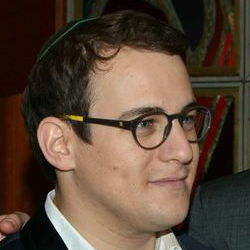 SPONSORED: Ensemble. Melting Rhapsody - Malcolm Miller enjoys Jack Liebeck and Danny Driver's 'Hebrew Melody' recital, plus a recital by David Aaron Carpenter.
SPONSORED: Ensemble. Melting Rhapsody - Malcolm Miller enjoys Jack Liebeck and Danny Driver's 'Hebrew Melody' recital, plus a recital by David Aaron Carpenter.
All sponsored features >>
'De-Screening'
JEFFREY NEIL investigates the marvellous score for the 1939 film 'The Wizard of Oz'
San Francisco Symphony's film series puts overlooked orchestral 'background music' in front of the screen. Focusing on the score of any of the epic Hollywood films on the line-up at Davies Hall will inevitably allow audiences to appreciate music that during a normal screening is relegated to mood enhancement or ambiance. But this 'de-screening', or upstaging of the actors by the symphony's musicians, is especially significant for a film like The Wizard of Oz, whose fame from the inception has been tied to its on-screen 'technical wizardry', acting, and the vocal virtuosity of legendary Judy Garland, Ray Bolger, Jack Haley and Bert Lahr.
The film's composer Herbert Stothart (1885-1949) has been eclipsed by his musical co-creators, songwriter Harold Arlen and lyricist Edgar 'Yip' Harburg, who are responsible for the songs. SF Symphony's world class musicians, under the direction of Esa-Pekka Salonen, elevate the orchestral music in the Gesamtkunstwerk, or 'Total Work of Art', in which cinematography, dialogue, and music work together to totally transport the audience into a vision that is more than just entertainment. It is also political, psychological, and philosophical. The music in particular has a surprising role in both lulling the audience into an intoxicated euphoria and awakening them from that stupor.
Behind the major key of the children's story in The Wizard of Oz, there is indeed a 'minor key' of parable and, I daresay, musical manipulation that speaks to a specific political reality in 1939: the Great Depression and a movement that believed technology could pull the country out of a decade of unemployment and malaise. The movie industry, as dream machine, provided a psychological escape hatch, while fueling its own growth at the ticket counter. But there was another political and economic reality, extending a half century from 1890 to the date of the film's release, which WOZ itself obfuscates through its sentimental portrayal of the Midwest and Dorothy's incomprehensible mantra about returning from whence she fled.
During the 1890s, the decade that inspired L Frank Baum's novel, The Wonderful Wizard of Oz, farming provided an uncertain living because of the numerous droughts, blight, and then an economic depression, which saw crop prices plummet. Henry Littlefields' reading of the book as a political parable argues quite convincingly that the yellow brick road is an allegory for the gold standard in the US, which William Jennings Bryan's candidacy was meant to challenge by adding silver to the currency supply to stimulate the depressed economy. Jennings Bryan's presidential platform won over Midwestern farmers by vowing to increase the supply of money and, the theory goes, drive prices for agricultural goods up. In the book, Dorothy wears silver shoes, which Littlefield argues give her the kind of powers the populists believed silver had. Another fascinating interpretation of the parable of the story is that the Wicked Witch of the East represented the factory overlords of the East Coast cities, who enslaved their workers, as she does with the Munchkins. The reason the Wicked Witch of the West is killed by water is that recurrent droughts were the cause of Midwestern farmers' woes and grinding labor.
But in 1939, the farmers of Kansas, Oklahoma, and the northern panhandle of Texas were in another desperate situation now called the first man-made environmental disaster. In the spring of 1935, dust storms of monumental proportions blackened the landscape, like the tornado scene in the film. After years of using the newest plowing technology to rip up the delicate topsoil and plow up millions of acres as fast as possible, dry winds roared in and caused a deadly storm that spewed Midwestern topsoil all over the continent. People died from suffocation, and farms turned into desert overnight. Even the politicians in the District of Columbia and the nouveau riche industrialists in New York could not escape the dark cloud that blew over and enshrouded those cities. As if under a witch's spell, it was night in those great eastern cities during the middle of the day.
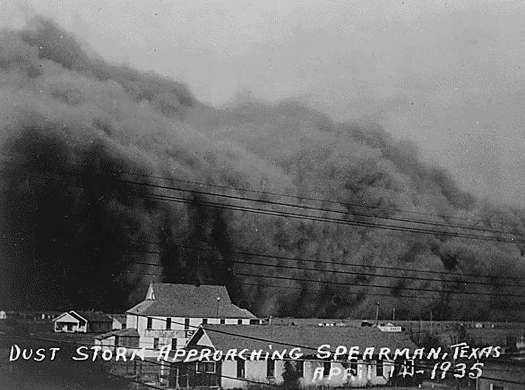
A dust storm approaching Spearman, Texas on 14 April 1935 (US National Archives)
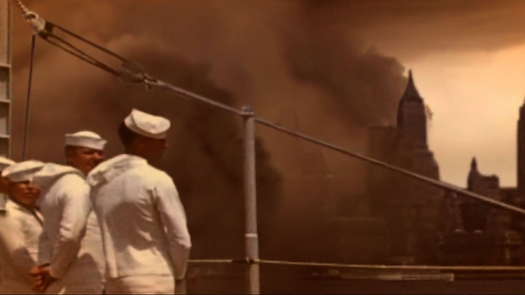
A black blizzard in New York City
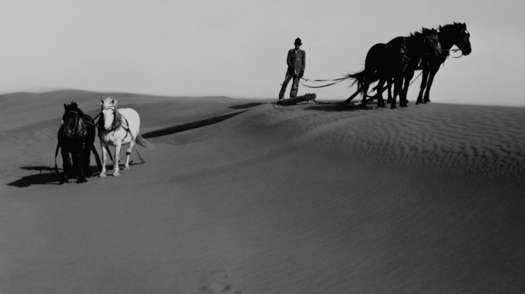
The dust bowl again (credit libraryroadtrip.com)
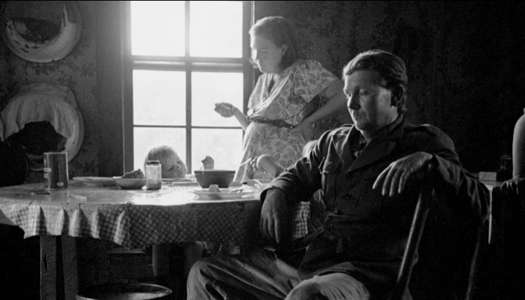
Dust bowl melancholy (credit pbs.org)
Dorothy Williamson, a social worker who photographed and wrote about her work with the families living through the apocalyptic aftermath, captured the trauma and despair: 'It was almost as if they were in the middle of something that they could see no way out of. And that is why they looked so hopeless…and also they looked stunned, as if they were thinking, can this really be happening? ... What they really needed was an inner thing that nobody could give them. They needed a trust again in something, which they had lost'. But little help came to them, and many people migrated west to California, where they were reviled as so-called 'Okies,' a white agricultural underclass that fared no better than Chinese or Black minorities.
When President Roosevelt went on his railroad tour of the heartland the following year, he offered a pep-speech from the back of a railroad car in North Dakota, but little to assist those directly affected by drought: 'Back East there have been all kinds of reports that out in the drought area there was a widespread despondency, a lack of hope for the future, and a general atmosphere of gloom. But I had a hunch—and it was right—that when I got out here I would find that you people had your chins up, that you were not looking forward in despair to the day when this country would be depopulated, but that you and your children fully expected to remain here'. That is all to say that the film echoes a strong desire on the part of the ruling class that the Midwestern farmers stay on their land. If hope wasn't there, then it needed to be improvised, fabricated, and imported from the presidential Pullman or the studios of Hollywood.
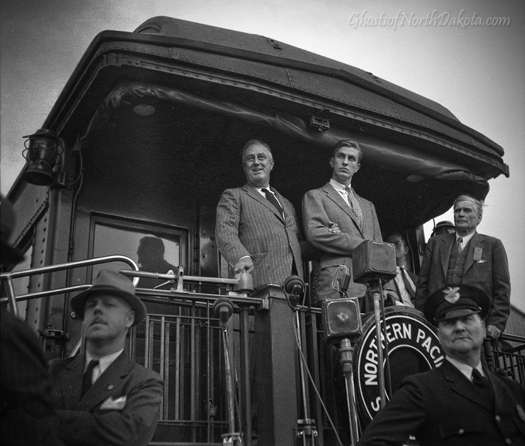
US President Roosevelt speaking from a train (credit ghostsofnorthdakota.com)
And so we come back to the music and its role in transcending the gray wretchedness of the Great Plains and perhaps, more cynically, greasing the wheels of the machinery of escapism-manufacturing what we call 'Hopium' today. The music of the most famous song from The Wizard of Oz, 'Over the Rainbow' came to Arlen on the way to a Chinese restaurant, when he asked his wife to pull over at Schwab's Drug Store in order to put down the notes that the 'muses' delivered to him. Yip Harburg's son and biographer, Ernie, says of the inspiration for his father's lyrics that it was meant to be 'a ballad for a little girl who ... was in trouble and ... wanted to get away from ... Kansas. A dry, arid, colorless place. She had never seen anything colorful in her life except the rainbow'.
There is a fascinating version of this in the outtakes for the film, which corresponds much more closely to the reality of the Midwest in the mid to late 1930s. It's a lachrymose reprise, which would have been sung when Dorothy was locked up in the witch's castle. Accompanied by the piano, rather than the orchestral aviary which made it to the screen, Garland breaks down throughout the song. She stops singing and sobs uncontrollably after the lyric 'birds fly over the rainbow, why ...' This the second lyrical ascent of the birds - first, blue birds, now this generic bird that gets stuck trying to cross over out of gray Kansas. She then sobs in a speaking voice, 'I'm frightened, Auntie Em ... I'm frightened'.
Listen — Harold Arlen: Over the Rainbow (reprise)
(The Wizard of Oz extract from outtake)
℗ 1939 Warner Bros / Turner Entertainment :
This version is painful for me to listen to. Instead of the buoyant sounds of the orchestra, we are down to a piano and a sobbing girl/woman. It's sixteen year-old Judy Garland playing twelve year-old Dorothy, and it offers at the same time a view into the agony of an unconsoled terrified child, who has no way to make real and imaginary fears go away.
Even the fantasy of escape in this reprise outtake falls apart. First, there is the ascent of Dorothy's voice to vocally express blue-bird's flying-the imaginary uplifting out of fear and abandonment. But the fantasy disintegrates with the second, generic 'birds fly over the rainbow'. The lyrical concept and her voice both crash, and we are left in a world where birds don't fly and voices don't soar. Instead, witches flap in their incomprehensible chases after little dogs and lonely girls, and wizards lie and confound. This outtake is also, like a witch's future-telling crystal ball, a window into the tear-filled life of the later Judy Garland, whose own life would be disfigured by uppers and downers, supplied by the Hollywood studios to fuel the dream machine. A man offstage, probably King Vidor, who directed the Kansas scenes, comments: 'It's good for me'.
As much as this version of 'Over the Rainbow' expresses the agonizing reality of those left in that first major man-made environmental catastrophe or foreshadows the future of the tragic diva, it is not one that makes it on the screen. Instead, the Romantic score transmogrifies the raw emotions of terror and sadness into a melancholy and longing that ascends.
Listen — Harold Arlen: Somewhere Over the Rainbow (excerpt)
(The Wizard of Oz)
℗ 1939 Warner Bros / Turner Entertainment :
Here we also have the sound of Hollywood in the 1930s, Romantic in its sweep and abundant use of many different kinds of string and wind instruments to first sketch out a lullaby that is nostalgic and slightly creepy and then populate our imagination with the enchantment of fluttering birds, the direct heir to the 'forest murmurs' from Wagner's Siegfried. The harp and xylophone in particular seem to communicate the Romanticist detachment of inner spirit from outer contingency. It's the score that accomplishes this role of not simply suffusing a scene with a moody spell, but creating a transcendent bridge from a character's lyrical interior to our own.
This function of music takes us to a major philosophical debate in Hollywood during this classic age of cinema: what was the purpose of the orchestral score in particular? In one camp was a group that believed music needed to play a very small role or it was usurping the primacy of-or even sabotaging-the dialogue and cinematography. Leonardo Quinto, a professor of music, puts this in the starkest terms in 1945:
Remember, the most important feature of any film is its story content. You paid your admission to be entertained by a story and not by a concert.
Indeed, a good score would be considered a distraction at best and at worst an affront to the integrity of the film-viewing experience. Kurt London, a film theorist, expressed this best in 1936, when he argued that:
Music heard in the concert-hall differs fundamentally from music heard in films, because absolute music is apprehended consciously, film music unconsciously ... [During a film the] music may have struck the filmgoer once or twice but otherwise he could hardly have told you, especially in an instance of well-made music, what he had really heard. Only at points where the music diverged from the picture, whether in its quality or meaning, was his concentration on the picture disturbed. Thus we reach the conclusion that good film music remain 'unnoticed'.
This is clearly not the case in WOZ, and we might dismiss this whole theoretical debate about the role of music in film by remembering that this film is a musical, so, of course the music must also occupy a central role. But, then, classical music takes front and center stage, violating one of the cardinal rules of that same camp in Hollywood: never use a well-known piece. During Toto's escape from the witch's castle, the orchestra performs Mendelssohn's Scherzo Opus 16 No 2, and while Dorothy is chased by the witch's army of flying monkeys, the instantly recognizable Night on Bald Mountain by Mussorgsky.
According to Ernest Lindgren in The Art of the Film, 'The use of well-known music is ... distracting, and has the additional disadvantage that it often has certain associations for the spectator which may conflict entirely with the associations the producer wishes to establish in his film ... The use of classical music for sound films is entirely to be deplored ...' And, yet, here we have it. The Wizard of Oz with its frequent use of leitmotivs for characters and places is as Romantic as Mendelssohn or Wagner, and no doubt that is why a number like 'Jitterbug', which has a big band jazz sound, was cut. This was not meant to be a variety show of music that would appeal to a wide audience, but a coherent Romantic piece, in which the orchestral score and music numbers swell the soul, rather than just entertain.
The SF Symphony's screening used a very poor sound system indeed, and much of the dialogue was incomprehensible, swallowed up by the hall. When the orchestra unabashedly performed the Mendelssohn and Mussorgsky, it was obvious that the musical score does not merely function to add a 'plenitude' or a 'human touch' to a 'cinematic apparatus' that feels cold and indifferent because of its use of alienating technology (Carol Flinn). Listening to Bert Lahr's number 'If I Only Had The Nerve', the response of the orchestra to the cowardly lion's confession is as integral to the song as those of Dorothy, the Scarecrow, and the Tin Woodsman. In many ways, the orchestral responses become lyrical, too. They move out of the realm of logic and into poetry that is enigmatic or nonsensical on the surface, but profound just below: 'I'd be brave as a blizzard'; 'I'd be gentle as a lizard'; 'I'd be clever as a gizzard'. The poetic play, meaningless on one level, but musically coherent on another, reaches its final rhyme with Dorothy's musical and poetic resolution, which concludes with Dorothy's low whole note: 'If the wizard is a wizard who will serve ...'
Listen — Harold Arlen / Yip Harburg: If I only had the nerve (excerpt)
(The Wizard of Oz)
℗ 1939 Warner Bros / Turner Entertainment :
By subordinating the screen to the orchestra, the SF Symphony makes one final important point about the role of a real-life orchestra versus a virtual experience of art. On the way into San Francisco, the original Oz, the 'yellow brick' elevated highway of Interstate-80 is dotted with billboards displaying messages that no longer make sense to the layman. They are literally written in programming code, directed at techies, for software and hardware, dedicated to creating digital worlds that are increasingly life-like or that more fully engross us and deracinate us from the world in which the orchestra is playing.
The Wizard of Oz was a technical masterpiece when it was produced, and it was part of a culture of 'technological utopianism', which was convinced that technology could 'lift the nation from the dire realities of the Depression to imagined realms of wonder and plenty', according to film critic Joshua Bellin. He reminds us that the critical reception of The Wizard of Oz in 1939 was focused on its special effects: 'from its deployment of the pricey and cumbersome Technicolor process to its spectacular cyclone effects, Oz represents a high point in the history of the Hollywood cinema as (dream) machine'. The Daily Variety, for example, was impressed by the 'technical wizardry', and the Hollywood Spectator wrote that it was 'one of the greatest technical feats the screen has to its credit'.
But the film is also a warning against the very same culture of screens that it glorifies through its own technological illusions. While Dorothy is still in Kansas, she visits the charlatan Professor Marvel, who pretends to read a crystal ball in order to offer mystical insight into Dorothy's life; it's all fake of course. In Oz, the very same actor will play the Wizard with his infamous spectacle of illusions to make a 'humbug' into an all-powerful sovereign. The Wizard's special effects appear on a screen-played as a kind of digital hologram in the film, a technological development from the paper maché and paint of the novel's 'special effects'. This is the world of on-screen ventriloquism, a kind of multiplication of illusory images to confound and befuddle. Thus, we see Dorothy's dream-state flicker on the screen of the house's window when she is swept up in the tornado. In the poppy field scene, the Wicked Witch of the West sees Dorothy et al on the screen of her crystal ball, and she is able to 'code' a change of weather onto the cinematic screen where the audience sees them. In a foreshadowing of our present-day screen-based meme culture, all of the flying monkeys bear the reproduced face of the Wicked Witch in the escape scene from her dungeon.
It is a chilling confirmation of the film's prophecy that the technology of screens and of our imprisonment in front of those screens and inside those virtual worlds has largely originated from the West: from Thomas Edison, who was called The Wizard of Menlo Park, to the original motion pictures in Fremont, CA to the Silicon Valley, which has rolled out every major screen-experience.

Screenshot from the film The Wizard of Oz.
© 1939 Warner Bros / Turner Entertainment
For the Wizard and the Wicked Witch alike, what appears on the screen, be it the Wizard's shock and awe spectacles or the Witch's crystal ball and magic, reduces life to a kind of computer game or 'metaverse' experience. In contrast, the orchestral music works to express a 'lyrical interiority': an inside world that is irrational, non-linear, and highly emotive. This is a realm of experience that defies the normal constraints of time and space and can't be reduced to the kind of platitude that the film obsessively peddles, 'There is no place like home.' Indeed, there is a greater place than the unending gray of Kansas and it exists in the 'lyrical interior' of Dorothy, which spontaneously responds to her alienation through the extemporaneous 'Over the Rainbow', the musical bridge that allows her to cross over into Oz.
But that's not always exactly the case, and the film also has one example in which we see a marvelous intersection of the radio jingle sound of marketing and the Romantic music of an epic quest. 'Optimistic Voices' is a short song that repeats a simple uplifting melody, like a radio jingle. The chorus has the homogenous vocal sound of a single-sex choir of similar voices. It is seductively cheerful, if artificial and vapid-like blue and pink spun cotton candy. This scene with two different singing groups, The Debutantes and the Rhythmettes, is the only moment in the film that I can think of where the characters become aware of extra-diegetic music. All four of the fellow travelers hear the choir singing, and they look up at the blue sky, right before they march down the last stretch of snow-covered poppy fields. Before them is Emerald City and the yellow brick road, and any attempt at verisimilitude is lost in this delightful entry into a two-dimensional cartoon world.
Watch and listen — Optimistic Voices
(The Wizard of Oz) © 1939 Warner Bros / Turner Entertainment :
You're out of the woods,
you're out of the dark, you're out of the night,
Step into the sun, step into the light.
Keep straight ahead for the most
glorious place on the face of the earth or the sky.
In response to the dread of being hounded by an unrelenting and powerful witch with magical powers, 'Optimistic Voices' is the voice of a sugar high, of manufactured optimism, of soft disembodied voices floating into the hyperbole of 'the most glorious place' in the world. It is also incredibly reminiscent of a similar moment in a Shirley Temple film that came out the year prior in which a little girl is also fleeing a nasty crone and a mercenary father enthralled to her. Absolutely sweet and processed, this jingle for Crackly Grain Flakes takes us into the euphoric world of an improvised radio recording studio. A quartet of handsome young men in vests and shirt sleeves sings a marketing jingle that implicitly tells the story of Manifest Destiny, the sweep across the continent of European settler colonists to produce the grain in this cereal and the military expansion into Latin America to bring the luxury of sugar to the masses. This sweet fantasy, like the quest for Oz, uses upbeat music to sketch a longing that can only be fulfilled by acquiring something outside of oneself: the Scarecrow his brain, the Tin Woodsman his heart, and the Lion his courage. As they march to Oz, the things they seek are every bit as externalized and commodified as a sugary breakfast cereal that 'the white man [fought] and die[d] for':
Watch and listen — Crackly Grain Flakes (Rebecca of Sunnybrook Farm)
(directed by Allan Dwan) © 1938 20th Century Studios :
Crackly Grain Flakes
The breakfast food of the land
Crackly Grain Flakes
Are what the people demand
What did the white man fight and die for
What did he sign for
What things today do babies cry for
Crackly Grain Flakes
The very cream of the crop
Crackly Grain Flakes
In every market and shop
They're so tasty
Just like pastry
Why not try them
Go and buy them
Crackly Grain Flakes are the top
Hollywood's 'dream machine' structures longing musically, cinematographically, and dramatically in ways that are utterly Romantic, transmogrifying raw emotion and providing a witness into the lyric interior of the characters. The use of leitmotif and a full orchestra that is in dialogue with what is said and what we see create a fantasy of complexity and depth - a poetic dreamscape. On the other hand, we see the absolute thrust of the world of screens, the 'upload' and 'download' - before the terms existed - of fantasy into a virtual world manipulated not by individual dreamers, but by a technical wizard. We have only to compare a rehearsal version of 'Optimistic Voices' by a male chorus (presumably Lahr et al) to listen to a sound that is cheerful without the kind of sugar high, processed allure of the version that made it to the screen. It is a quintessentially American optimism that was necessary to survive the environmental catastrophe in the Midwest, but also a hollow cheer, created by big business, to drown out that reality of trauma and displacement.
Listen — Arlen / Stothart / Yip Harburg: Optimistic voices
(rehearsal demo, excerpt) (The Wizard of Oz)
℗ 1939 Warner Bros / Turner Entertainment :
The Wizard of Oz warned us in a children's story, providing a parable about politics, environmental degradation, and the dangers of technology. SF Symphony's screening and orchestral performance reminds us just how powerful a real life orchestra expresses the 'lyrical interior' of each of us that virtual worlds and the technologies that drive them will never capture.
It is a wonderful synchronicity that last week there was an uproar about Apple's latest commercial that imagines a massive machine demolishing musical instruments and flattening them into the 'thinnest iPad' ever produced.

Screenshot from a recent Apple iPad commercial. © 2024 Apple Inc
At least at this moment in time, people don't want their orchestra crushed into an iPad. And in Davies Hall, the instruments have come right off the flat screen.
Copyright © 18 May 2024
Jeffrey Neil,
California, USA



